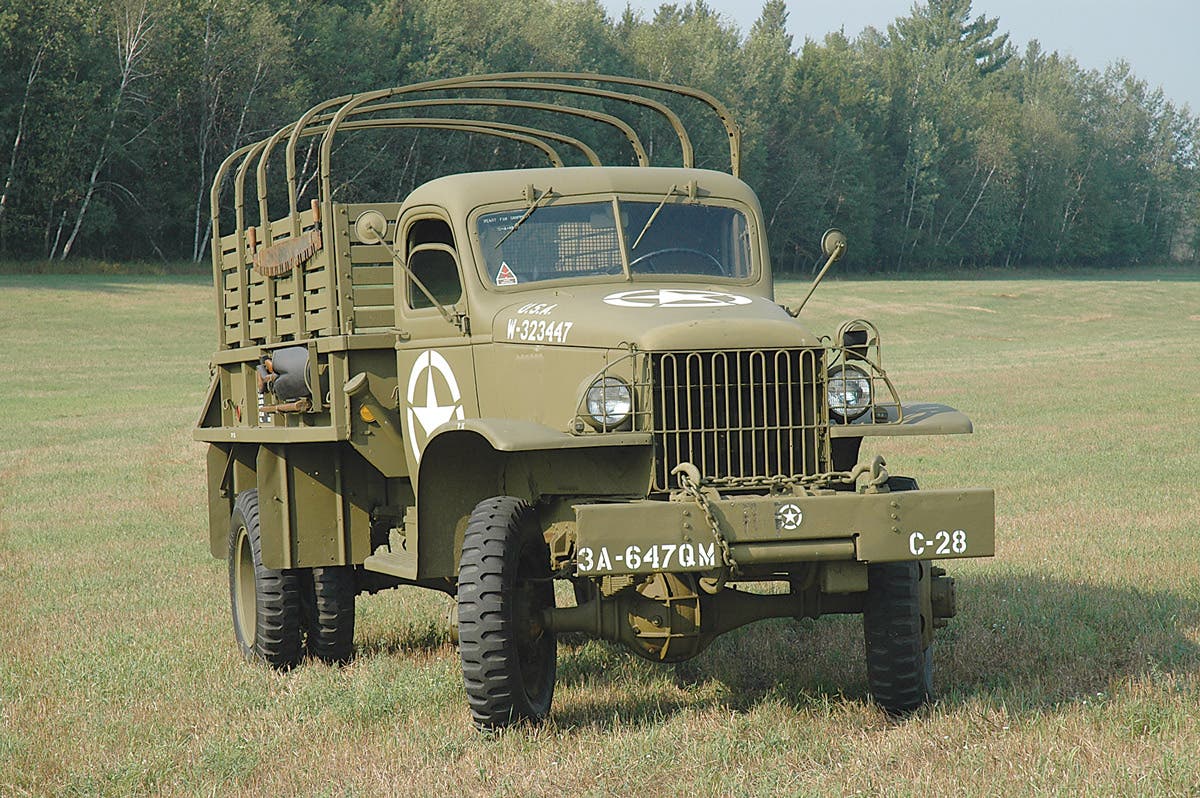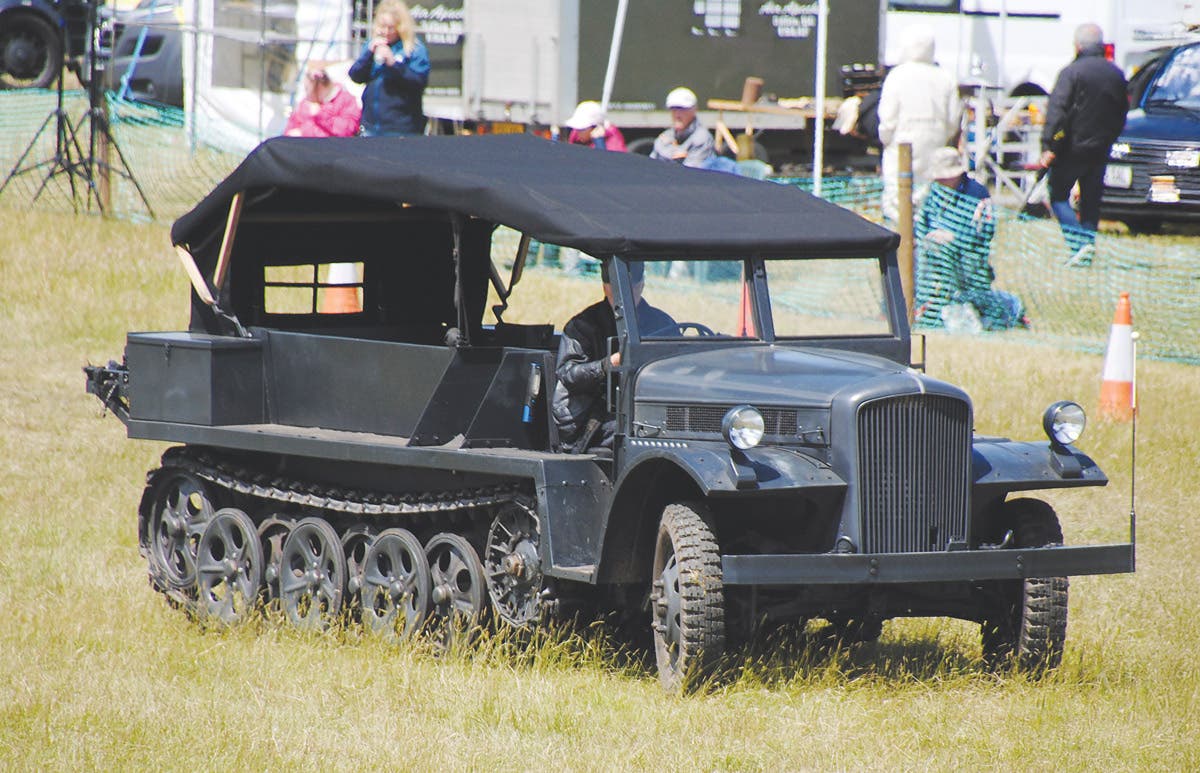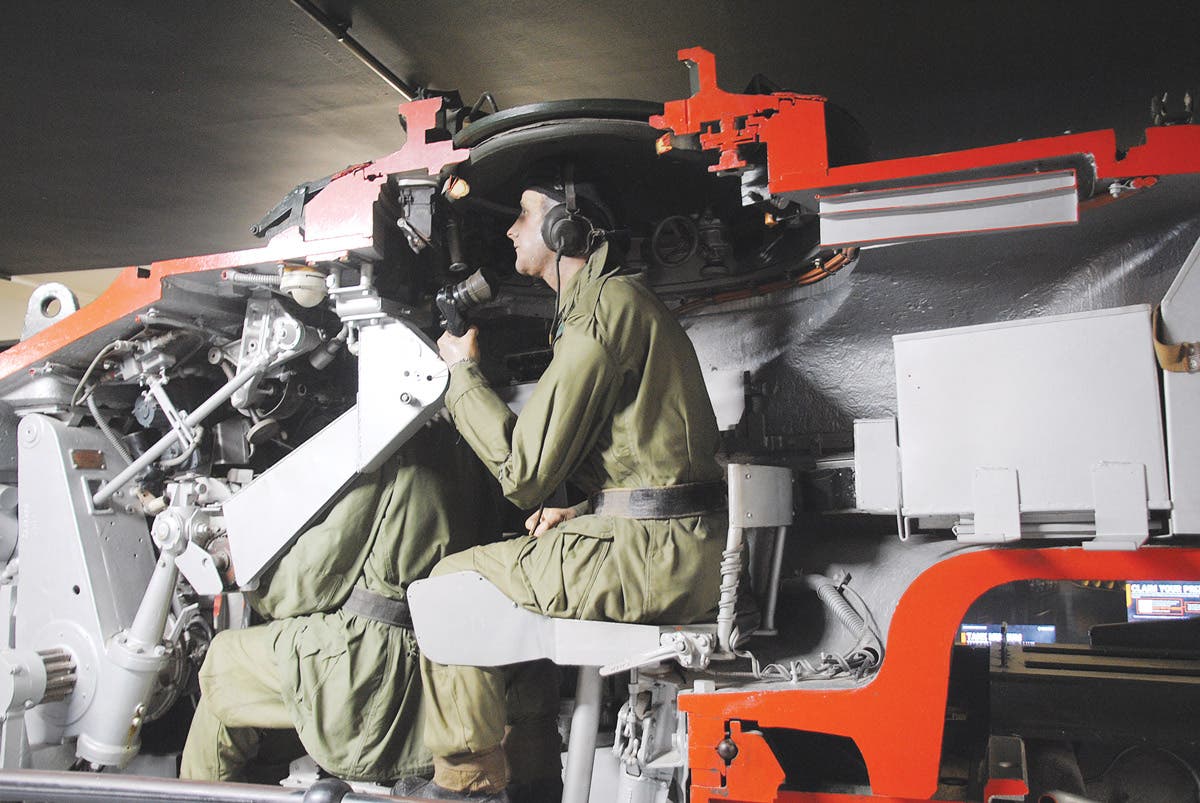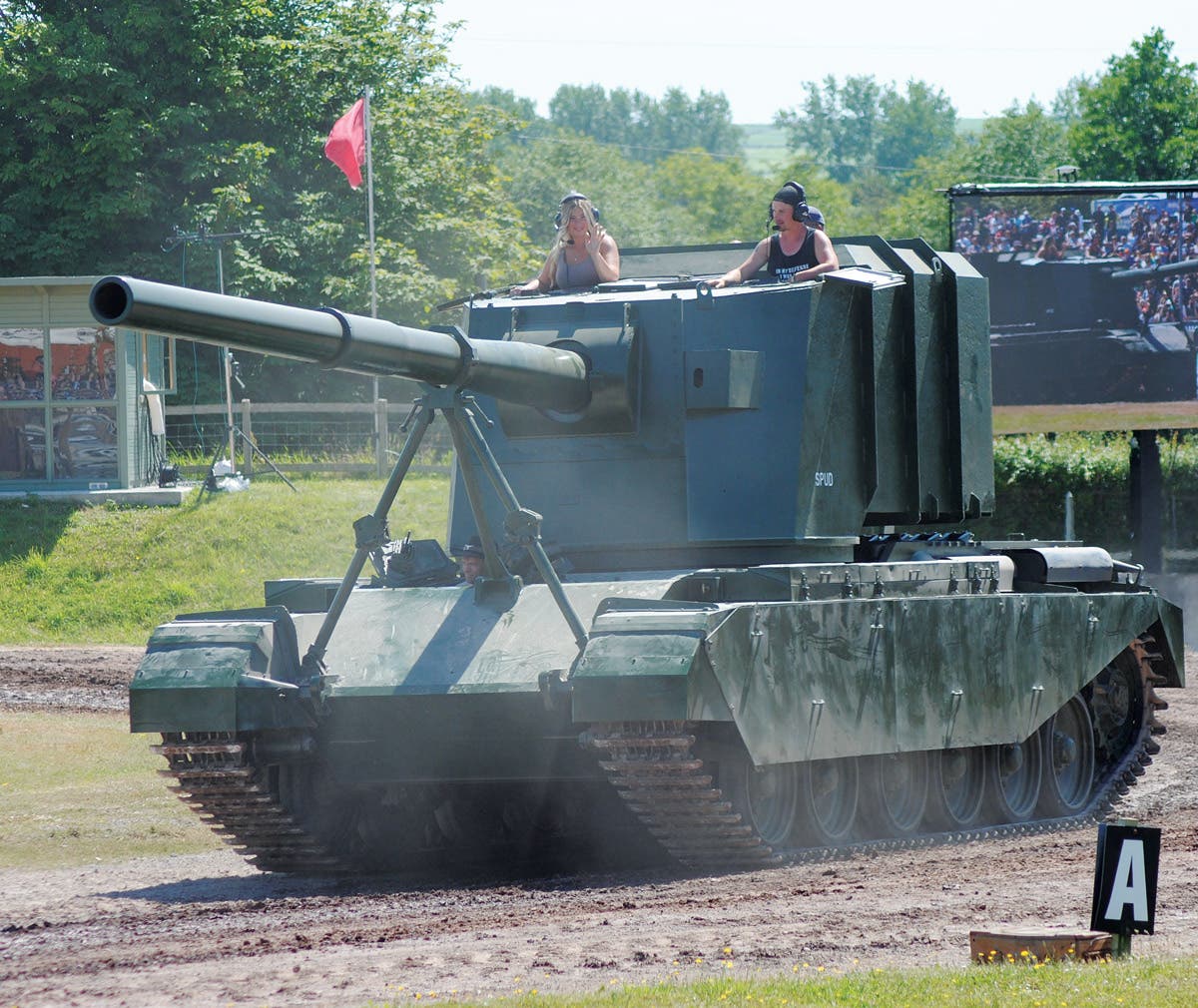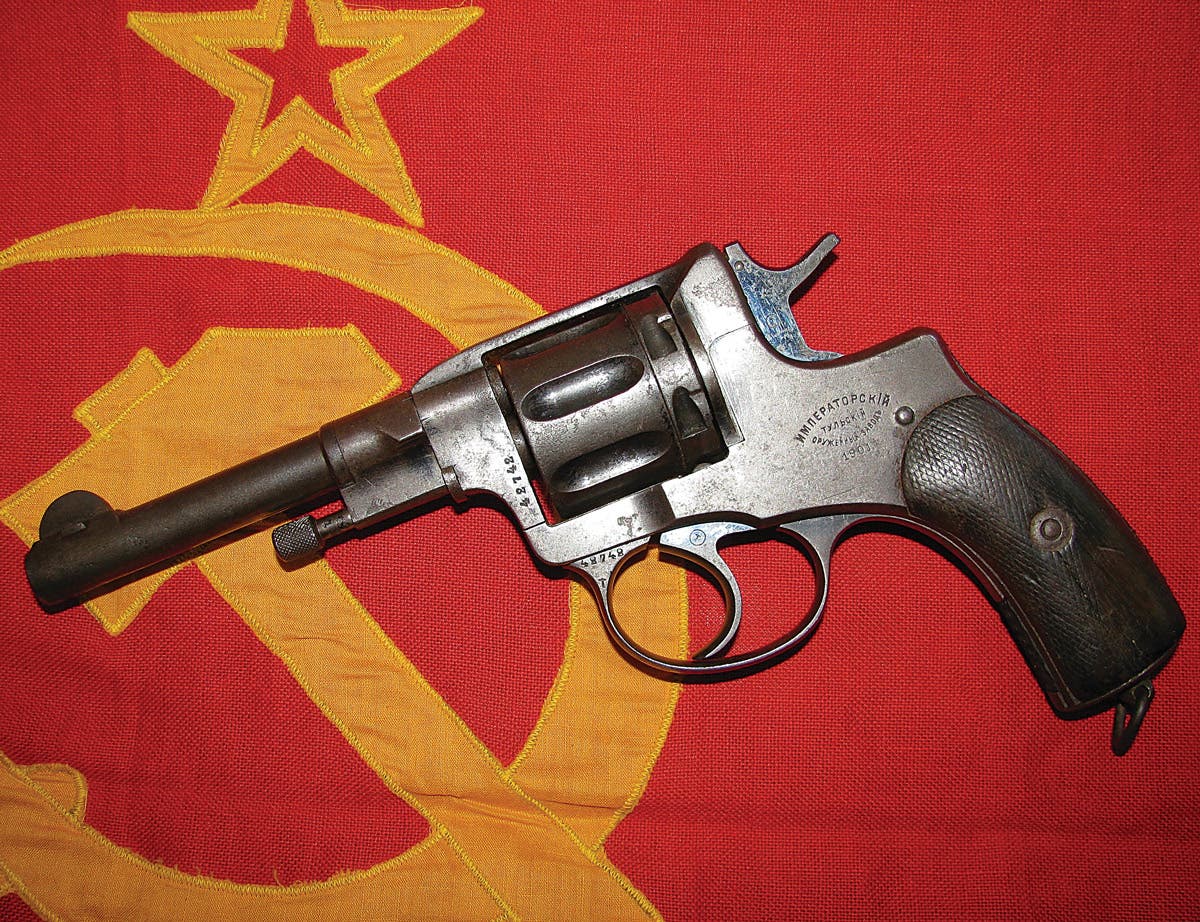A look at the M3 Half-Track
The M3 half-track was a mover of men and much more!
A mainstay of Hollywood’s depiction of WWII during the 1950s and 60s, the US produced more than 40,000 halftracks from 1933 and 1944 and filled many roles with Allied forces – albeit not necessarily the same ones depicted on the big screen.
Of the dozens of halftrack variations produced, the M3 and M3A1 Halftrack Personnel Carriers were among the most widely used. As the name suggests, these vehicles were used to move men across beaches, through mud and snow and forest on every front, and also served as a prime mover for the M5 3-inch anti-tank gun.
The similar M2 was intended to be an artillery prime mover, and had a body ten-inches shorter than the M3, and owing as well to a different interior layout, held only 10 men rather than the 13 of the M3.
While the M3 lacked the ammo stowage compartments and associated side doors of the M3, the M3 did feature a door in the rear armor that was lacking form the M2. Because of the rear door, the M3 utilized a M25 pedestal mount (with a D54075 gun cradle) to support the M1919A4 .30 caliber machine gun, rather than the skate rail found in the M2.
Initial M3 production contracts were awarded to both Autocar and Diamond T in September and October 1940, respectively. Meetings between Ordnance, Autocar, White and Diamond T during those months led to the formation of the Half-Track Engineering Committee. Comprised of representatives from these organizations, the Committee objective was to create half-track vehicles with as many common components as possible.
Deliveries of the M3 began in May 1941. Demand for the vehicle was such that in July 1941 White was contracted to produce the M3 halftrack– or, as White referred to them – Half-trac as well.
During M3 production, external mine racks and interior grab handles were added and the suspension, fuel filters, and other components evolved. In mid-1943 the decision was made to introduce removable armored vehicle headlamps.
Near the end of production, the M25 pedestal mount with .30 caliber M1919A4 was replaced with a M49 ring mount and M2HB .50-caliber machine gun over the co-driver’s seat. With the change in gun mounting the model designation was changed to M3A1. Diamond T shifted production from the M3 to the M3A1 in November 1943, and delivered its final M3A1 in February 1944. Autocar built its last M3 in October 1943, and the final M3A1 in November, likewise White built its final personnel carrier in November 1943.
The expansive maneuvers conducted in Louisiana, Tennessee and the Carolinas gave U.S. troops as well as strategists the opportunity to become familiar with the new M2 and M3 half-track vehicles. The M2 and M3 showed they had reasonable mobility and some degree of armor protection. Pleased with performance and reliability of the vehicles, the basic half-track design was soon adapted for a variety of uses beyond the original prime mover, personnel, and mortar carrier roles. Many of these adaptations were expedient variants. As the war progressed the intention was to replace not only the expedient variants but the halftracks themselves with fully tracked, more heavily armored vehicles.
Many of these expedient variants were intended for direct combat roles, where unfortunately many shortcomings were revealed. The resulting casualties in both men and machines led to the mass-conversion of many of the specialized variants into standard personnel carriers. This includes 1360 75mm Gun Motor Carriages that were converted into M3A1 personnel carriers which carried on until April 1945.
While during WWII, most halftracks supplied to Allied nations were the International Harvester-produced M5/M9 series with welded bodies, 1475 M3-series Personnel Carriers were transferred to the Free French through Lend-Lease, as were 40 to Canada, 3 to Brazil, and two each to Great Britain and the Soviet Union.
After WWII, many halftracks were supplied to Allied nations or sold as surplus. The U.S. Army continued to use mortar carriers and the M16 Multiple Gun Motor Carriages through the Korean War—when demand for the M16 was so great that contracts were issued to Bowen and McLaughlin to convert 1,662 M3A1 personnel carriers into M16A1 Multiple Gun Motor Carriages. The quad mounts on these converted vehicles were situated higher on the M16A1 than on the actual M16 vehicles, which had hinged upper armor. The higher mounting of the M16A1 was required to allow the guns to fire over the rigid sides of the M3A1.
By 10 February 1955, as the type was nearing obsolescence, US Army stocks had dropped to 1,518 examples worldwide.
For additional information, please see US Half-Tracks Legends of Warfare or Military Machine: US Halftrack Parts 1 and 2, seen in the www.DavidDoyleBooks.com ad elsewhere in this issue.
David Doyle's earliest published works were occasional articles in enthusiast publications aimed at the historic military vehicle restoration hobby. This was a natural outlet for a guy whose collection includes several Vietnam-era vehicles such as M62, M123A1C, M35A2, M36A2C, M292A2, M756, and an M764.
By 1999, his writing efforts grew to include regular features in leading periodicals devoted to the hobby both domestically and internationally, appearing regularly in US, English and Polish publications.
In 2003, David received his a commission to write his first book, The Standard Catalog of U.S. Military Vehicles. Since then, several outlets have published more than 100 of his works. While most of these concern historic military hardware, including aircraft and warships, his volumes on military vehicles, meticulously researched by David and his wife Denise, remain the genre for which he is most recognized. This recognition earned life-time achievement in June 2015, when he was presented Military Vehicle Preservation Association (MVPA) bestowed on him the coveted Bart Vanderveen Award in recognition of “...the individual who has contributed the most to the historic preservation of military vehicles worldwide.”
In addition to all of publishing efforts, David is the editor of the MVPA’s magazine, History in Motion, as well as serving as the organization’s Publications Director. He also maintains a retail outlet for his books online and at shows around the U.S.



